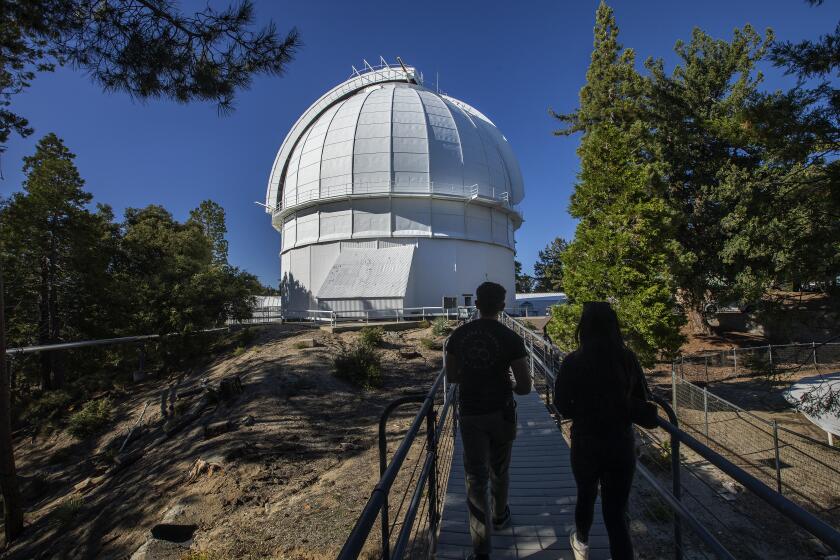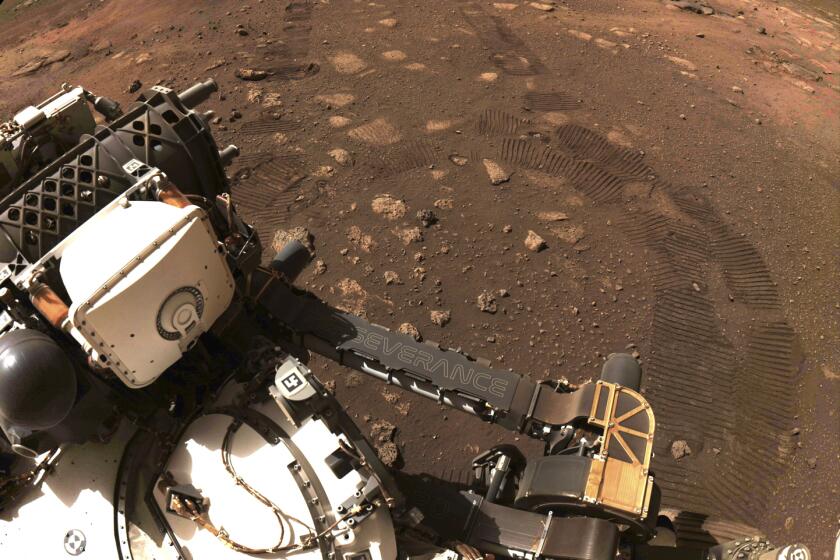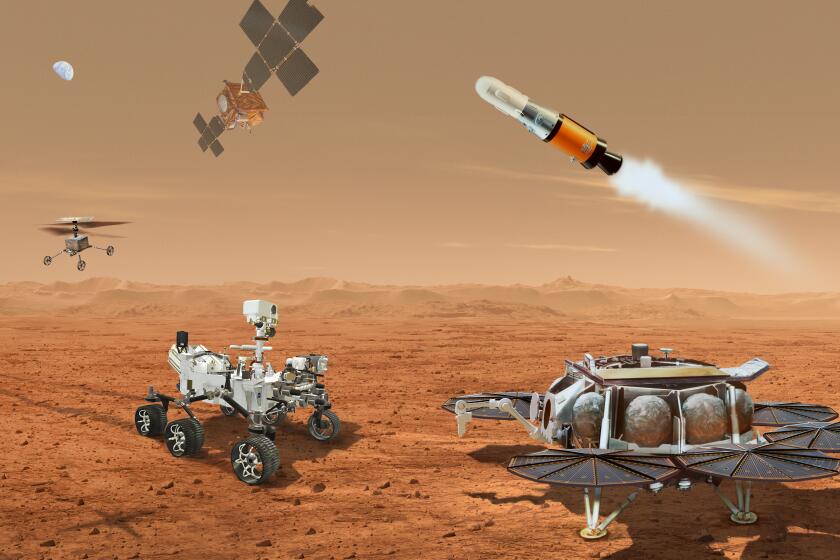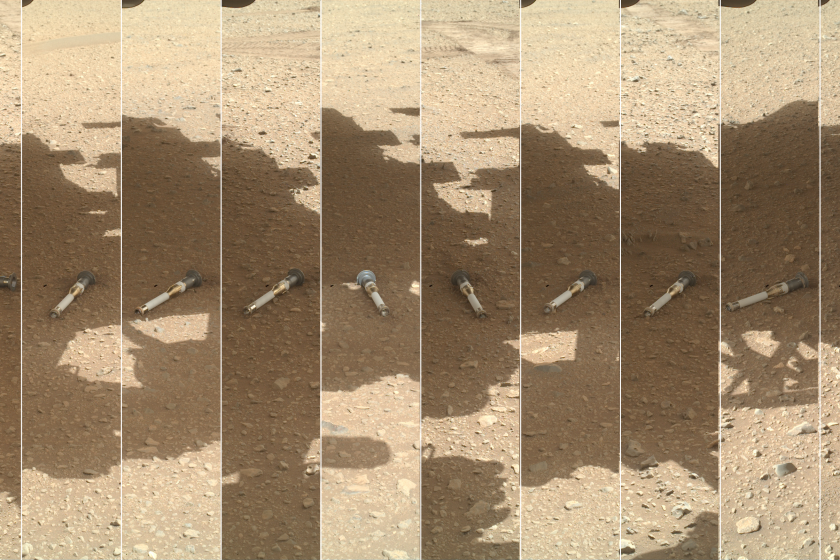Opinion: America’s ‘big glass’ dominance hangs on the fate of two powerful new telescopes
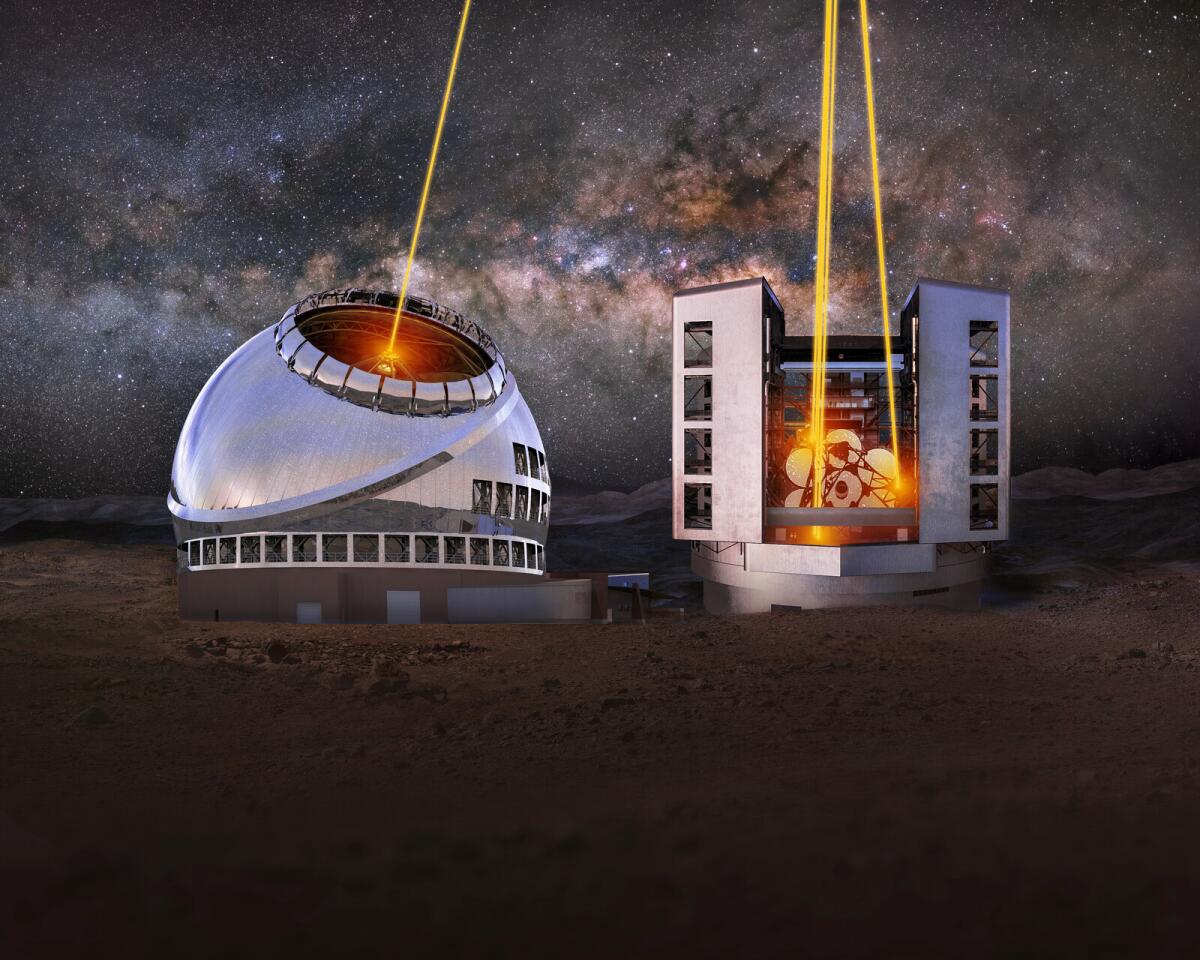
- Share via
More than 100 years ago, astronomer George Ellery Hale brought our two Pasadena institutions together to build what was then the largest optical telescope in the world. The Mt. Wilson Observatory changed the conception of humankind’s place in the universe and revealed the mysteries of the heavens to generations of citizens and scientists alike. Ever since then, the United States has been at the forefront of “big glass.”
In fact, our institutions, Carnegie Science and Caltech, still help run some of the largest telescopes for visible-light astronomy ever built.
But that legacy is being threatened as the National Science Foundation, the federal agency that supports basic research in the U.S., considers whether to fund two giant telescope projects. What’s at stake is falling behind in astronomy and cosmology, potentially for half a century, and surrendering the scientific and technological agenda to Europe and China.
The most important things we know about the cosmos were discovered in the mountains above Los Angeles. ‘You don’t just throw away a historic place,’ says one of the volunteers trying to save it.
In 2021, the National Academy of Sciences released Astro2020. This report, a road map of national priorities, recommended funding the $2.5-billion Giant Magellan Telescope at the peak of Cerro Las Campanas in Chile and the $3.9-billion Thirty Meter Telescope at Mauna Kea in Hawaii. According to those plans, the telescopes would be up and running sometime in the 2030s.
NASA and the Department of Energy backed the plan. Still, the National Science Foundation’s governing board on Feb. 27 said it should limit its contribution to $1.6 billion, enough to move ahead with just one telescope. The NSF intends to present their process for making a final decision in early May, when it will also ask for an update on nongovernmental funding for the two telescopes. The ultimate arbiter is Congress, which sets the agency’s budget.
Bringing back samples from the Red Planet would help us beat the Chinese, send humans into space and learn about how planets form. Congress, where’s the money?
America has learned the hard way that falling behind in science and technology can be costly. Beginning in the 1970s, the U.S. ceded its powerful manufacturing base, once the nation’s pride, to Asia. Fast forward to 2022, the U.S. government marshaled a genuine effort toward rebuilding and restarting its factories — for advanced manufacturing, clean energy and more — with the Inflation Reduction Act, which is expected to cost more than $1 trillion.
President Biden also signed into law the $280-billion CHIPS and Science Act two years ago to revive domestic research and manufacturing of semiconductors — which the U.S. used to dominate — and narrow the gap with China.
As of 2024, America is the unquestioned leader in astronomy, building powerful telescopes and making significant discoveries. A failure to step up now would cede our dominance in ways that would be difficult to remedy.
Could JPL’s ambitious Mars Sample Return mission use the long-troubled, massively over budget, but ultimately successful James Webb Space Telescope as a guide?
The National Science Foundation’s decision will be highly consequential. Europe, which is on the cusp of overtaking the U.S. in astronomy, is building the aptly named Extremely Large Telescope, and the United States hasn’t been invited to partner in the project. Russia aims to create a new space station and link up with China to build an automated nuclear reactor on the moon.
Although we welcome any sizable grant for new telescope projects, it’s crucial to understand that allocating funds sufficient for just one of the two planned telescopes won’t suffice. The Giant Magellan and the Thirty Meter telescopes are designed to work together to create capabilities far greater than the sum of their parts. They are complementary ground stations. The GMT would have an expansive view of the southern hemisphere heavens, and the TMT would do the same for the northern hemisphere.
NASA’s administrator says the agency is committed to the mission to bring samples of Mars back to Earth -- but in less time and for less money. How it will pull that off remains to be seen.
The goal is “all-sky” observation, a wide-angle view into deep space. Europe’s Extremely Large Telescope won’t have that capability. Besides boosting America’s competitive edge in astronomy, the powerful dual telescopes, with full coverage of both hemispheres, would allow researchers to gain a better understanding of phenomena that come and go quickly, such as colliding black holes and the massive stellar explosions known as supernovas. They would put us on a path to explore Earth-like planets orbiting other suns and address the question: “Are we alone?”
Funding both the GMT and TMT is an investment in basic science research, the kind of fundamental work that typically has led to economic growth and innovation in our uniquely American ecosystem of scientists, investors and entrepreneurs.
Elon Musk’s SpaceX is the most recent example, but the synergy goes back decades. Basic science at the vaunted Bell Labs, in part supported by taxpayer contributions, was responsible for the transistor, the discovery of cosmic microwave background and establishing the basis of modern quantum computing. The internet, in large part, started as a military communications project during the Cold War.
Maarten Schmidt, astronomer whose discovery of quasars revealed the solar bodies that roam the universe, dies at 92.
Beyond its economic ripple effect, basic research in space and about the cosmos has played an outsized role in the imagination of Americans. In the 1960s, Dutch-born American astronomer Maarten Schmidt was the first scientist to identify a quasar, a star-like object that emits radio waves, a discovery that supported a new understanding of the creation of the universe: the Big Bang. The first picture of a black hole, seen with the Event Horizon Telescope, was front-page news in 2019.
We understand that competing in astronomy has only gotten more expensive, and there’s a need to concentrate on a limited number of critical projects. But what could get lost in the shuffle are the kind of ambitious projects that have made America the scientific envy of the world, inspiring new generations of researchers and attracting the best minds in math and science to our colleges and universities.
Do we really want to pay that price?
Eric D. Isaacs is the president of Carnegie Science, prime backer of the Giant Magellan Telescope. Thomas F. Rosenbaum is president of Caltech, key developer of the Thirty Meter Telescope.
More to Read
A cure for the common opinion
Get thought-provoking perspectives with our weekly newsletter.
You may occasionally receive promotional content from the Los Angeles Times.
